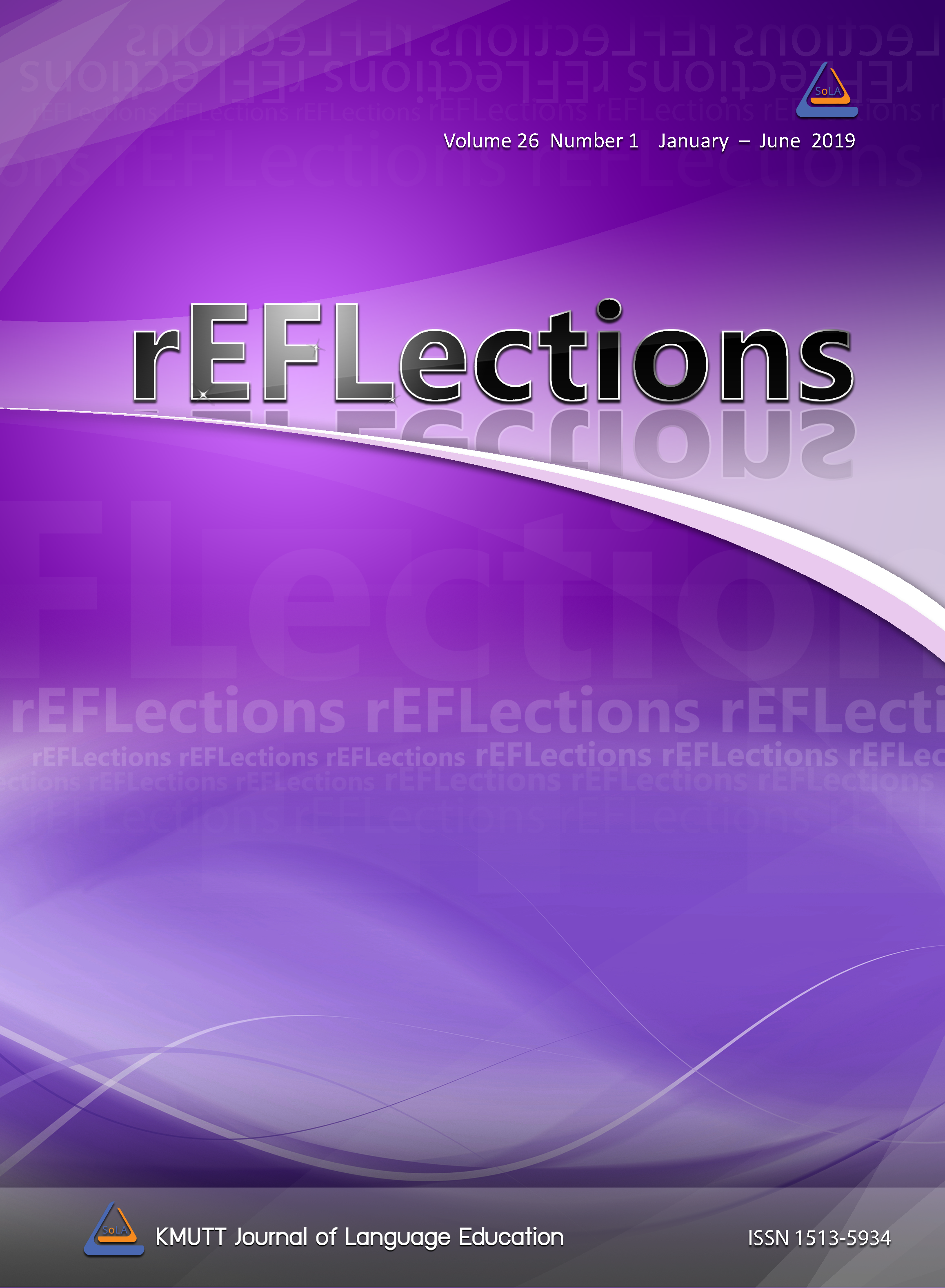Using Scaffolded Instructions to Improve Students’ Skills
Main Article Content
Abstract
This study aims to investigate whether using scaffolded instructions can enhance students’ speaking skills and build up their confidence. The participants were twelve first-year undergraduate students who attended a self-study club called “Let’s Speak”. The objective of the club is to enable students to make effective presentations and speak English with confidence. Throughout the 10 sessions, students spent each two-week time in length practising making presentation about five different things. Language support and feedback both from teacher and friends were used as scaffolds to enhance students’ performance each
week. Confidence in speaking questionnaire (adapted from Griffee, 1997) were distributed to the participants twice (before session 1 and after session 10) to see changes in their perceived confidence while the checklist and presentation scores of the first session and the last session were compared to see changes in their overall performance. At the end of the tenth session, videos of the students’ performance in session 1 and session 10 were shown to the students as a prompt for a stimulated-recall interview on how they saw their improvement. The findings reveal an increase in their perceived confidence as well as higher scores in their actual performance. The students themselves reported their improvements in many aspects. On the basis of these findings, the pedagogical implications and suggestions are included in this paper.
Article Details
References
Briner, M. (1999). “What is constructivism?” University of Colorado at Denver School of Education. Retrieved from http://curriculum.calstatela.edu/faculty/psparks/theorists/501learn.htm.
Bruner, J. (1966). Towards a theory of instruction. Cambridge, MA: Harvard University Press.
Bruner, J. (1983). Child’s talk: Learning to use language. New York, NY: Notton.
Chang, F. (2011). The causes of learners’ reticence and passivity in English classrooms in Taiwan. The Journal of Asia TEFL, 8(1), 1-22.
Dewi, R. S., Kultsum, U., & Armadi, A. (2017). Using communicative games in improving students’ speaking skills. English Language Teaching, 10(1), 63-71. Retrieved from https://files.eric.ed.gov/fulltext/EJ1124241.pdf
Ee- Ling, L., & Azirah, H. (2012). English in Southeast Asia: Features, policy and language in use. Amsterdam, Netherlands: Benjamins Publishing Company.
Ellis, E. S., & Larkin, M. J. (1998). Strategic instruction for adolescents with learning disabilities. In B. Y. L. Wong (Ed.), Learning about learning disabilities (2nd ed., pp. 585-656). San Diego, CA: Academic Press.
Eun-Byung, Cho. (2004). Issues concerning Korean learners of English: English education in Korea and some common difficulties of Korean students. The East Asian Learner, 1(2), 31-36.
Gibbons, P. (2015). Scaffolding language, scaffolding learning: Teaching English language learners in the mainstream classroom. Portsmouth, NH: Heinemann.
Griffee, D. T. (1997). Validating a questionnaire on confidence in speaking English as a foreign language. JALT Journal, 19(2), 177-197.
Larkin, M. J. (2002). Using scaffolded instruction to optimize learning. In ERIC Digest, ERIC Clearinghouse on Disabilities and Gifted Education (EDO-EC-02-17). Arlington, VA: Education Resources Information Center.
Monica, A. & Olatubosun, O. (2013). Effects of scaffolding strategy on learners’ academic achievement in integrated science at the junior secondary school level. European Scientific Journal, 9(19), 149-155.
Ngoqo, V. M., Foncha, J. W., & Abongdia, A. J. F. (2018). Sustaining quality teaching and learning to instil good discipline and academic performance. Newcastle upon Tyne, United Kingdom: Cambridge Scholars Publishing.
Pol, J. V., Volman, M., Oort, F., & Beishuizen, J. (2015). The effects of scaffolding in the classroom: Support contingency and student independent working time in relation to student achievement, task effort and appreciation of support. Instructional Science, 43(5), 615-641.
Rahmani, D. V. (2014). A quantitative action research on promoting confidence in a foreign language classroom: Implications for second language teachers. The Center for Practitioner Research (CFPR) at National Louis University, 5(1), 1-20.
Simons, K. D., & Klein, J. D. (2007). The impact of scaffolding and student achievement levels in a problem-based learning environment. Instructional Science, 35(1), 41-72.
Swain, M., & Lapkin, S. (1995). Problems in output and the cognitive processes they generate: A step towards second language learning. Applied Linguistics, 16(3), 371-391.
Trakulkasemsuk, W. (2012). Thai English: An emerging variety of World Englishes. In L. Ee- Ling & H. Azirah (Eds.), English in Southeast Asia: Features, policy and language in use (pp.101-111). Amsterdam, Netherlands: Benjamins Publishing Company.
Van der Stuyf, R. R. (2002). Scaffolding as a teaching strategy. Adolescent learning and development, 52(3), 5-18.
Verhergen P.W., & Collis, B. (1996). Scaffolding the development of skill in the design process for educational medial through hyperlinked units of learning materials (ULMS report).
Enschede, Netherlands: Faculty of Educational Science and Technology, University of Twente.
Vygotsky, L. S. (1978). Mind in society: The development of higher psychological processes. Cambridge, MA.: Harvard University Press.
Wong, B. (2004). Learning about learning disabilities. San Diego, CA: Academic Press.


